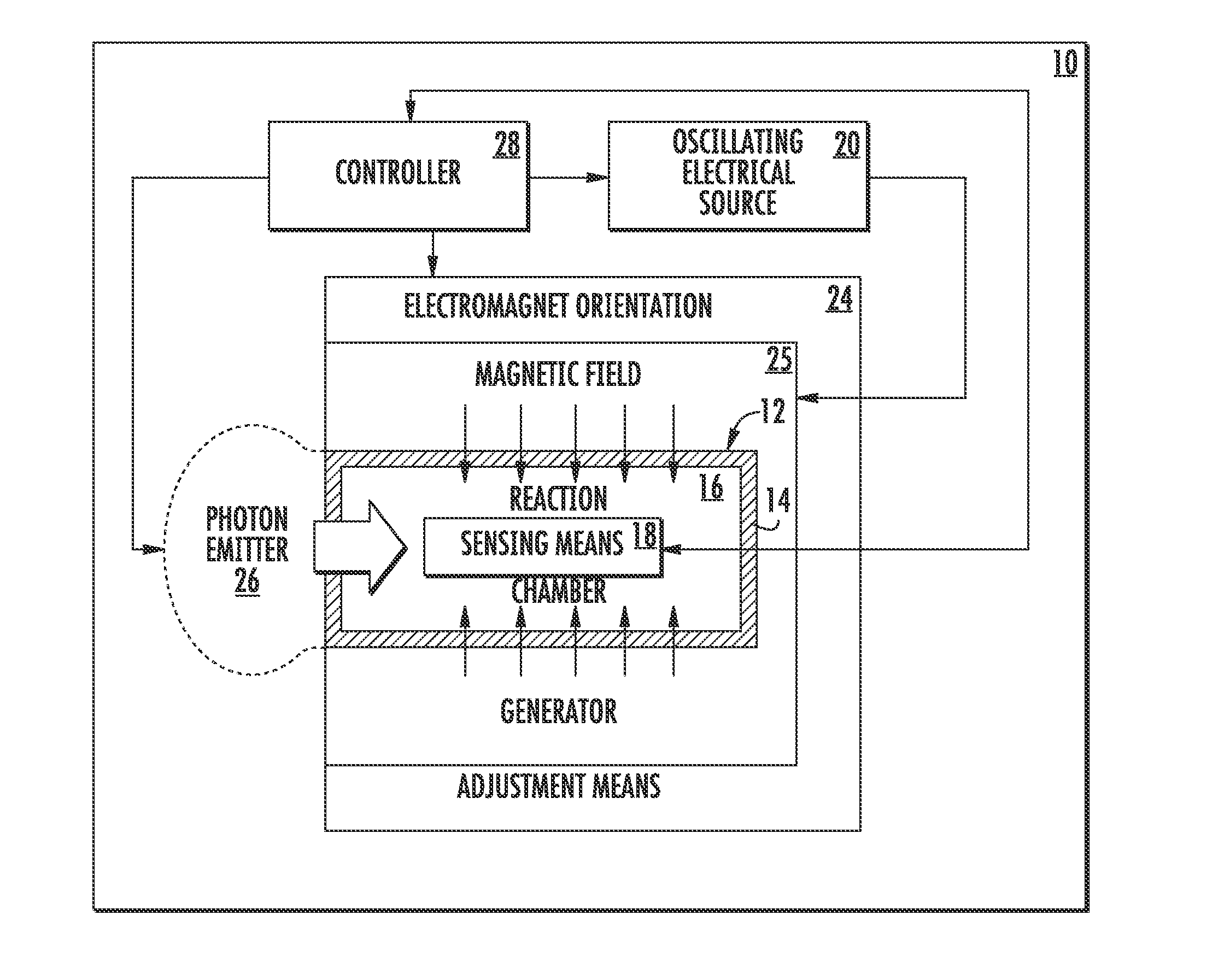Molecular dissociation apparatus and method
a technology of dissociation apparatus and molecule, which is applied in the direction of magnetic separation, electrogenerative process, energy-based chemical/physical/physical-chemical process, etc., to achieve the effect of dissociating the targeted molecule and improving efficiency
- Summary
- Abstract
- Description
- Claims
- Application Information
AI Technical Summary
Benefits of technology
Problems solved by technology
Method used
Image
Examples
example
Dissociation of Carbon Dioxide (CO2)
[0053]CO2 is a greenhouse gas that will rapidly become a global killer if humankind does not curtail its emissions. The best scientists in the world absolutely do not know what to do about these emissions. Even though CO2 is considered a linear molecule and acts much like diatomic molecule, it has an extremely strong bond that holds the molecular structure together and it is very difficult to break up. However, the bond strength of a molecule is of no consequence when its natural frequency of vibration is targeted. CO2 is a triatomic molecule that has three modes of vibration as illustrated in FIG. 12.
[0054]Dissociation of the target molecule CO2 may be carried out by subjecting at least one of these three modes of vibration to a perturbing frequency of equal value in-phase (or near in-phase) or out-of-phase (or near out-of-phase) with CO2's resonant frequency.
In-Phase Operation
[0055]When the perturbing frequency generated by the subject apparatus...
PUM
 Login to View More
Login to View More Abstract
Description
Claims
Application Information
 Login to View More
Login to View More - R&D
- Intellectual Property
- Life Sciences
- Materials
- Tech Scout
- Unparalleled Data Quality
- Higher Quality Content
- 60% Fewer Hallucinations
Browse by: Latest US Patents, China's latest patents, Technical Efficacy Thesaurus, Application Domain, Technology Topic, Popular Technical Reports.
© 2025 PatSnap. All rights reserved.Legal|Privacy policy|Modern Slavery Act Transparency Statement|Sitemap|About US| Contact US: help@patsnap.com



